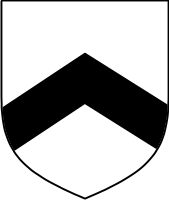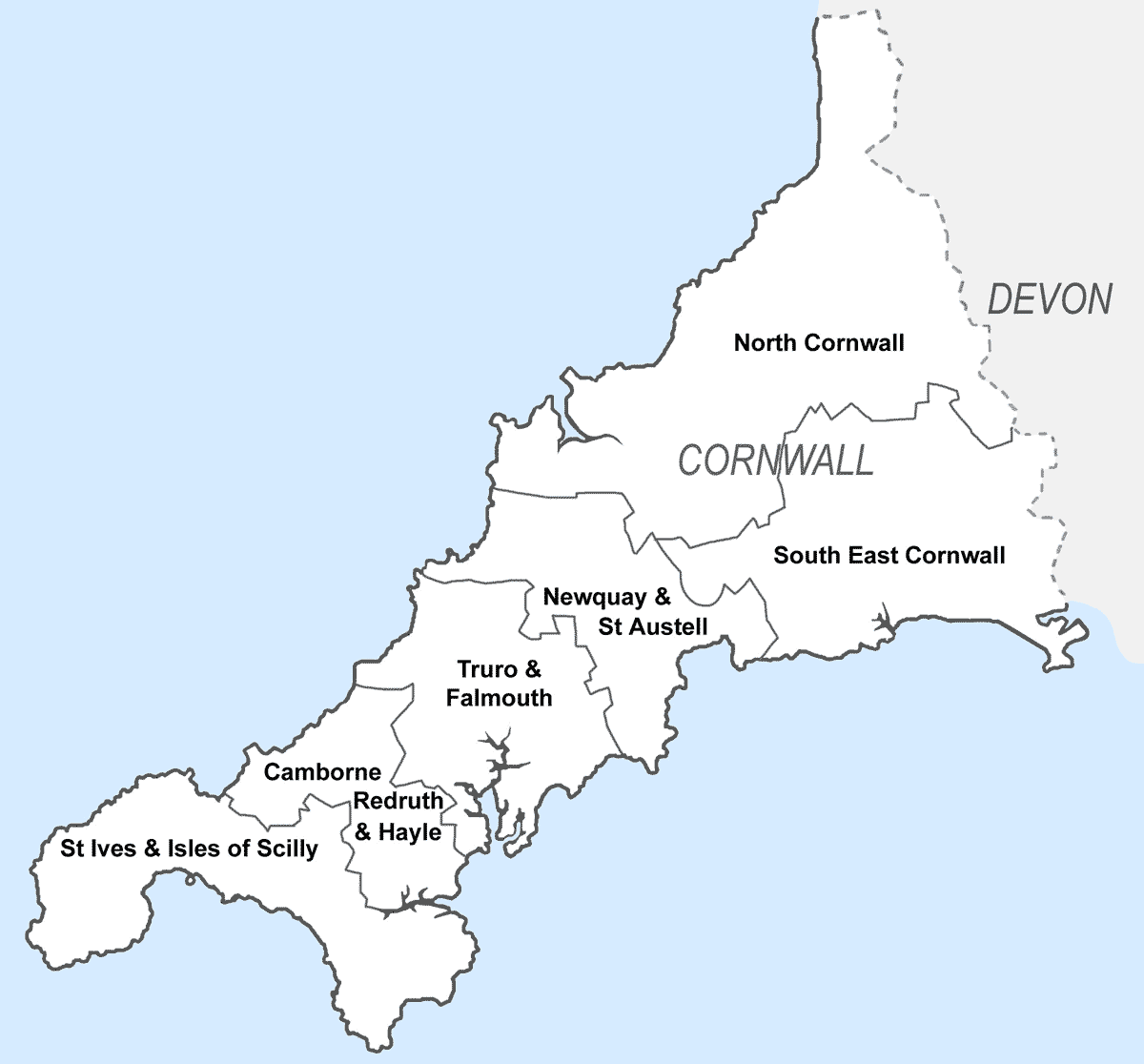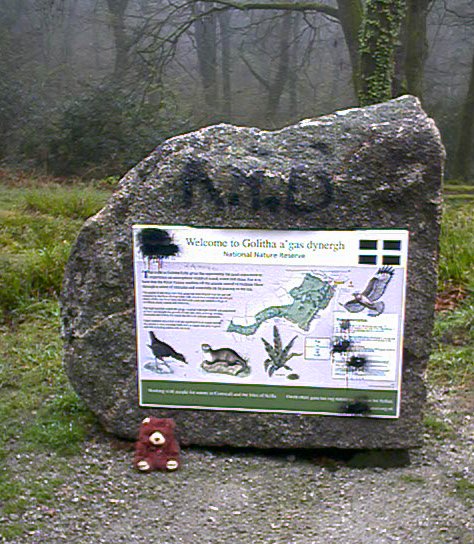|
Looe
Looe (; kw, Logh, ) is a coastal town and civil parish in south-east Cornwall, England, with a population of 5,280 at the 2011 census. Looe is west of Plymouth and south of Liskeard, divided in two by the River Looe, East Looe ( kw, links=no, Logh) and West Looe ( kw, links=no, Porthbyhan, "little cove") being connected by a bridge. Looe developed as two separate towns each with MPs and its own mayor. The town centres around a small harbour and along the steep-sided valley of the River Looe which flows between East and West Looe to the sea beside a sandy beach. Offshore to the west, opposite the stonier Hannafore Beach, lies Looe Island. History Prehistory and foundation Archeological evidence indicates that the area around Looe has been inhabited since the Neolithic period (although a possible series of ancient field systems, south of nearby Penarthtown, could suggest earlier Palaeolithic activity). A Neolithic stone axe, made of greenstone, was found in 1978 on a tid ... [...More Info...] [...Related Items...] OR: [Wikipedia] [Google] [Baidu] |
Looe Island
Looe Island ( kw, Enys Lann-Managh, meaning ''Island of the Monk's Enclosure''), also known as St George's Island, and historically St Michael's Island is a small island nature reserve a mile from the mainland town of Looe off Cornwall, England. According to local legend, Joseph of Arimathea landed here with the Christ Child. Some scholars, including Glyn S. Lewis, suggest the island could be Ictis, the location described by Diodorus Siculus as a centre for the tin trade in pre-Roman Britain. The island is now owned and managed by the Cornwall Wildlife Trust charity where access (including landing on the foreshore and flying of drones over the island) is carefully managed for the benefit of wildlife and landing is only possible via the Cornwall Wildlife Trust authorized boatman. The waters around the island are a marine nature reserve and form part of the Looe Voluntary Marine Conservation Area (VMCA). First established in 1995, the Looe VCMA covers nearly 5 km of coastlin ... [...More Info...] [...Related Items...] OR: [Wikipedia] [Google] [Baidu] |
Looe Bridge
Looe Bridge is a bridge in Looe, Cornwall, across the River Looe. Built in the 1850s to replace a dangerous 15th-century structure, the bridge carries the A387 road and is a Grade II listed building. History Early crossing (c. 1400–1405) An early wooden bridge was built across the river at Looe in . This structure burned down in 1405. Medieval bridge (1411–1853) The first stone bridge across the river in the town was built following a grant of 22 October 1411; construction took 25 years and was completed in 1436. Most descriptions of the bridge give its length as , although publication of 1847 described it as being long. Similarly disputed is the number of arches the bridge had – reports by John Leland describe either 12 or 16, ''The Gentleman's Magazine'' listed 13, Celia Fiennes referred to its 14 arches, William Borlase sketched and the National Heritage List for England states 15, and Thomas Bond specified 18. The arches varied in width from ; the larger ... [...More Info...] [...Related Items...] OR: [Wikipedia] [Google] [Baidu] |
River Looe
The River Looe ( kw, Logh, meaning ''deep water inlet'') is a river in south-east Cornwall, which flows into the English Channel at Looe. It has two main branches, the East Looe River and the West Looe River. The eastern branch has its source near St Cleer only away from the Golitha Falls on the River Fowey, and flows south, passing close to the western outskirts of Liskeard. The western branch has its source near Dobwalls. South of Liskeard, the Looe Valley Line railway follows the course of the East Looe River to Looe. The railway is so close to the river that flooding is a common occurrence. The lowest stretch of the rivers combine to form the tidal harbour and estuary of Looe. The combined length of the two rivers (including the tidal confluence) is . The river is tidal to Watergate on the West Looe and Sandplace on the East Looe. After Sandplace, the river was connected to the Liskeard and Looe Union Canal so that minerals and stone could be transported from the working ... [...More Info...] [...Related Items...] OR: [Wikipedia] [Google] [Baidu] |
Trelawne
Trelawne ( kw, Trevelowen, meaning ''elm-tree homestead'') is an historic manor in the parish of Pelynt in Cornwall, England, situated west of Plymouth, Devon and west-northwest of Looe, Cornwall. It was long the seat of the Trelawny family, later Trelawny baronets, one of the most eminent of Cornish gentry families, much of whose political power derived from their control of the pocket borough of nearby East Looe. The surviving grade II* listed manor house known as ''Trelawne House'' is today used for holiday accommodation and entertainment, under the name "Trelawne Manor Holiday Park". Trelawne manor Trelawne manor dates back to Norman times when it was held by Rainald de Vautort. It later passed in turn to the Cardinans, the Chapernouns and the Bonvilles. In 1554 the estate was confiscated from Henry Grey, Duke of Suffolk, the father of Lady Jane Grey and sold in 1600 to Sir Jonathan Trelawny, whose family had originated at Trelawny in Altarnun. It then passed down in ... [...More Info...] [...Related Items...] OR: [Wikipedia] [Google] [Baidu] |
Liskeard
Liskeard ( ; kw, Lyskerrys) is a small ancient stannary and market town in south-east Cornwall, South West England. It is situated approximately 20 miles (32 km) west of Plymouth, west of the Devon border, and 12 miles (20 km) east of Bodmin. The Bodmin Moor lies to the north-west of the town. The total population of the town at the 2011 census was 11,366 History The Cornish place name element ''Lis'', along with ancient privileges accorded the town, indicates that the settlement was once a high status 'court'. King Dungarth whose cross is a few miles north near St Cleer is thought to be a descendant of the early 8th century king Gerren of Dumnonia and is said to have held his court in Liskeard (''Lis-Cerruyt''). Liskeard (Liscarret) was at the time of the Domesday Survey an important manor with a mill rendering 12d. yearly and a market rendering 4s. William the Conqueror gave it to Robert, Count of Mortain by whom it was held in demesne. Ever since that time ... [...More Info...] [...Related Items...] OR: [Wikipedia] [Google] [Baidu] |
South East Cornwall (UK Parliament Constituency)
South East Cornwall is a constituency represented in the House of Commons of the UK Parliament since 2010 by Sheryll Murray, a Conservative. Boundaries 1983–2010: The District of Caradon, the Borough of Restormel wards of Fowey, Lostwithiel, St Blaise, and Tywardreath, and the District of North Cornwall ward of Stoke Climsland. 2010–present: The District of Caradon, and the Borough of Restormel ward of Lostwithiel. History The predecessor county division, Bodmin, serving the area from 1885 until 1983 had (during those 98 years) 15 members (two of whom had broken terms of office serving the area), seeing twelve shifts of preference between the Liberal, Liberal Unionist and Conservative parties, spread quite broadly throughout that period. Consistent with this, since 1983 the preference for an MP has alternated between Liberal Democrats and Conservatives. The current constituency territory contains the location of several former borough constituencies which were abol ... [...More Info...] [...Related Items...] OR: [Wikipedia] [Google] [Baidu] |
Ictis
Ictis, or Iktin, is or was an island described as a tin trading centre in the '' Bibliotheca historica'' of the Sicilian-Greek historian Diodorus Siculus, writing in the first century BC. While Ictis is widely accepted to have been an island somewhere off the southern coast of what is now England, scholars continue to debate its precise location. Candidates include St Michael's Mount and Looe Island off the coast of Cornwall, the Mount Batten peninsula in Devon, and the Isle of Wight further to the east. Primary sources Diodorus Siculus, who flourished between about 60 and about 30 BC, is supposed to have relied for his account of the geography of Britain on a lost work of Pytheas, a Greek geographer from Massalia who made a voyage around the coast of Britain near the end of the fourth century BC, searching for the source of amber. The record of the voyage of Pytheas was lost in antiquity but was known to some later writers, including Timaeus, Posidonius, and Pliny the Eld ... [...More Info...] [...Related Items...] OR: [Wikipedia] [Google] [Baidu] |
Lerryn
Lerryn ( kw, Leryon, archaically Lerrin) is a village in Cornwall, United Kingdom. It is situated on the River Lerryn (a tributary of the River Fowey) approximately three miles (5 km) southeast of Lostwithiel. Lerryn straddles two parishes: north of the river it is in St Winnow parish and south of the river in St Veep parish. The river is tidal up to the village and there are stepping-stones across the river which are crossable at low water. Geography The village has a village school of about 46 pupils, a post office and village shop, "Lerryn River Stores", which also provides fresh tea coffee and cakes seven days a week for walkers doing the many beautiful walks in the area. There is also a pub, ''The Ship Inn'', which dates from at least 1762. Much of the surrounding countryside is an Area of Outstanding Natural Beauty. An Elizabethan bridge crosses the river to the eastern edge of the village or you can cross via the famous stepping stones, a must for all visitors ... [...More Info...] [...Related Items...] OR: [Wikipedia] [Google] [Baidu] |
Cornwall
Cornwall (; kw, Kernow ) is a historic county and ceremonial county in South West England. It is recognised as one of the Celtic nations, and is the homeland of the Cornish people. Cornwall is bordered to the north and west by the Atlantic Ocean, to the south by the English Channel, and to the east by the county of Devon, with the River Tamar forming the border between them. Cornwall forms the westernmost part of the South West Peninsula of the island of Great Britain. The southwesternmost point is Land's End and the southernmost Lizard Point. Cornwall has a population of and an area of . The county has been administered since 2009 by the unitary authority, Cornwall Council. The ceremonial county of Cornwall also includes the Isles of Scilly, which are administered separately. The administrative centre of Cornwall is Truro, its only city. Cornwall was formerly a Brythonic kingdom and subsequently a royal duchy. It is the cultural and ethnic origin of the Cornish dias ... [...More Info...] [...Related Items...] OR: [Wikipedia] [Google] [Baidu] |
River Fowey
The River Fowey ( ; kw, Fowi) is a river in Cornwall, England, United Kingdom. It rises at Fowey Well (originally kw, Fenten Fowi, meaning ''spring of the river Fowey'') about north-west of Brown Willy on Bodmin Moor, not far from one of its tributaries rising at Dozmary Pool and Colliford Lake, passes Lanhydrock House, Restormel Castle and Lostwithiel, then broadens below Milltown before joining the English Channel at Fowey. The estuary is called Uzell ( kw, Usel, meaning ''howling place''). It is only navigable by larger craft for the last . There is a ferry between Fowey and Bodinnick. The first road crossing going upstream is in Lostwithiel. The river has seven tributaries, the largest being the River Lerryn. The section of the Fowey Valley between Doublebois and Bodmin Parkway railway station is known as the Glynn Valley ( kw, Glyn, meaning ''deep wooded valley''). The valley is the route of both the A38 trunk road and the railway line (built by the Cornwall Railw ... [...More Info...] [...Related Items...] OR: [Wikipedia] [Google] [Baidu] |
Lanreath
Lanreath ( kw, Lannreydhow) is a civil parish and a village in southeast Cornwall, England, United Kingdom. The village is situated five miles (8 km) west-northwest of Looe. The name Lanreath (pronounced Lanreth) means 'church (Lann) of Raydhogh' and it has been known variously as ''Lanreythow'', ''Lanrathew'', or ''Lanrethou''. The village is mentioned in the Domesday Book as Lanredoch. Lanreath parish is entirely rural in character; apart from scattered farmsteads, the only settlement is Lanreath village. The parish is bordered to the west by Boconnoc and St Veep parishes, to the south by Pelynt parish, to the east by Duloe parish, and to the north by St Pinnock parish. History At the time of the Domesday Book (1086) Lanreath was one of 28 manors held by Richard (son of Turolf) from Robert, Count of Mortain. There was one hide of land and land for 8 ploughs. There were 3 ploughs, 4 serfs, 4 villeins and 10 smallholders. There were 30 acres of pasture, 40 acres of woodla ... [...More Info...] [...Related Items...] OR: [Wikipedia] [Google] [Baidu] |
Plymouth
Plymouth () is a port city and unitary authority in South West England. It is located on the south coast of Devon, approximately south-west of Exeter and south-west of London. It is bordered by Cornwall to the west and south-west. Plymouth's early history extends to the Bronze Age when a first settlement emerged at Mount Batten. This settlement continued as a trading post for the Roman Empire, until it was surpassed by the more prosperous village of Sutton founded in the ninth century, now called Plymouth. In 1588, an English fleet based in Plymouth intercepted and defeated the Spanish Armada. In 1620, the Pilgrim Fathers departed Plymouth for the New World and established Plymouth Colony, the second English settlement in what is now the United States of America. During the English Civil War, the town was held by the Roundhead, Parliamentarians and was besieged between 1642 and 1646. Throughout the Industrial Revolution, Plymouth grew as a commercial shipping port, handling ... [...More Info...] [...Related Items...] OR: [Wikipedia] [Google] [Baidu] |







